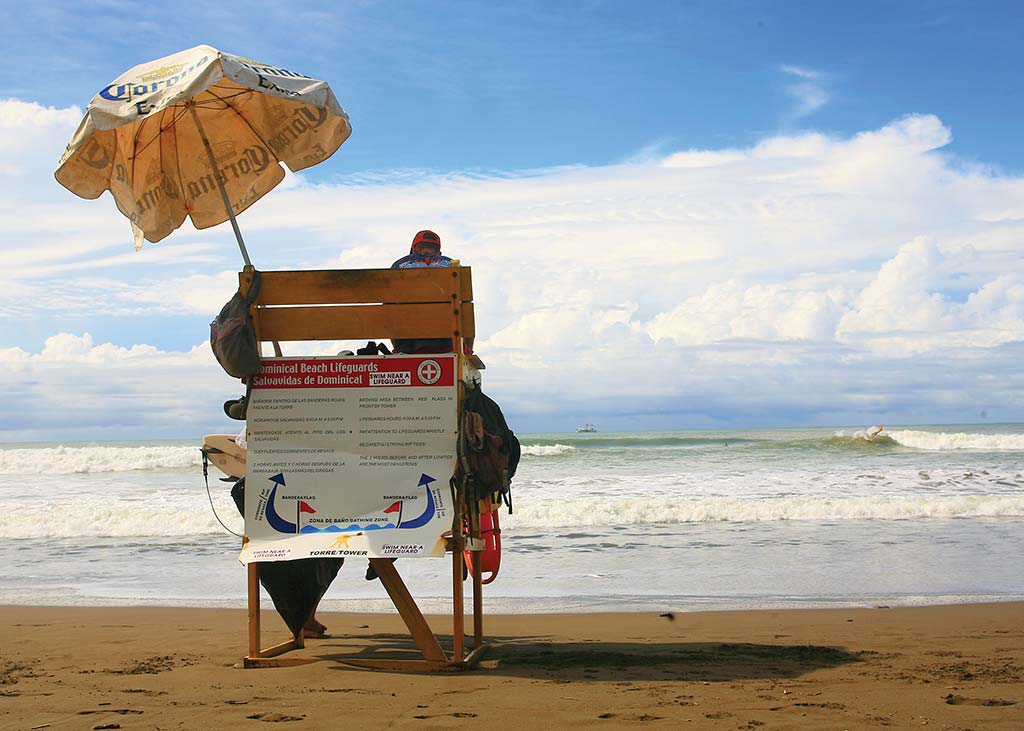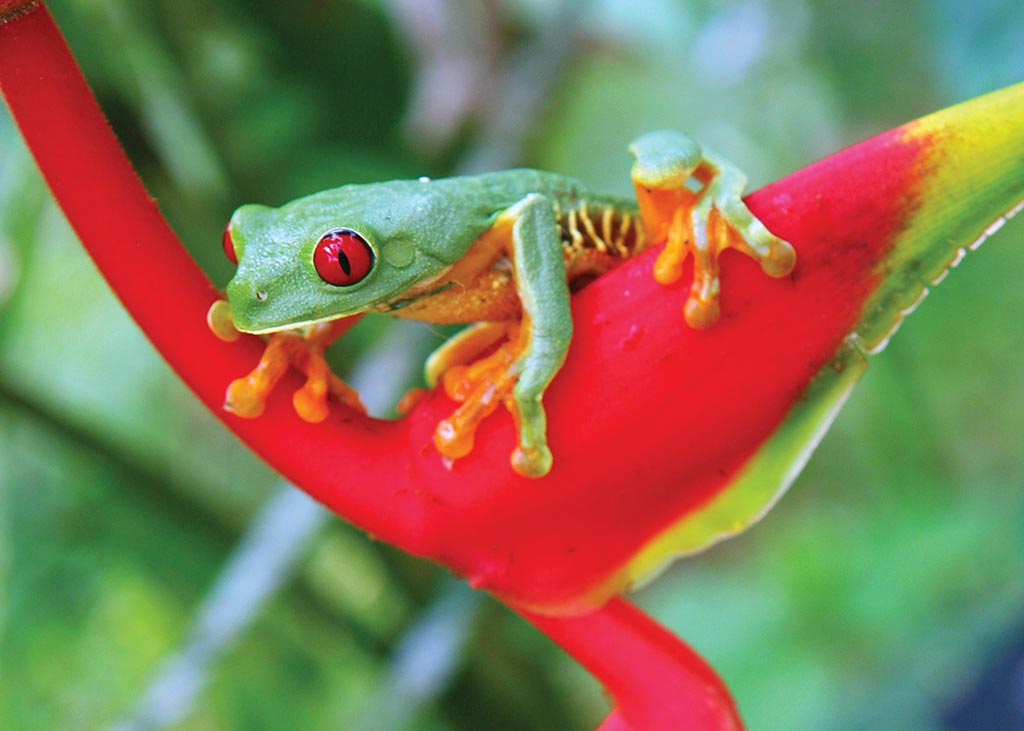Dominical, 45 kilometers (28 miles) southeast of Quepos, is a tiny laid-back resort favored by surfers, backpackers, and the college-age crowd. The four-kilometer (2.5-mile) beach is beautiful albeit pebbly, and the warm waters attract whales and dolphins close to shore. Río Barú empties reportedly polluted waters into the sea near the beach north of the village, which is graced with murals. Dominical Lifeguards (tel. 506/2787-0210) are on duty 8am-5pm daily, but swimming is dangerous because of riptides. The beach extends south five kilometers (3 miles) from Dominical to Dominicalito, a little fishing village in the lee of Punta Dominical.

Lifeguard at Playa Dominical. Photo © Christopher P. Baker.
Petroglyphs carved onto large rocks are the most obvious remains of what may be an ancient ceremonial site.If you overdose on the sun, sand, and surf, head into the lush mountains inland of Dominicalito, where a series of dirt roads lead steeply uphill to Escaleras (Staircases), a forest-clad region fantastic for horseback rides. Alternatively, head east on a paved road that leads to San Isidro, winding up through the valley of the Río Barú into the Fila Costanera mountains, where you may find yourself amid swirling clouds.The Refugio Nacional de Vida Silvestre Hacienda Barú (tel. 506/2787-0003), one kilometer (0.6 miles) north of Dominical, was created from a 330-hectare (815-acre) private preserve. It protects three kilometers (2 miles) of beach plus mangrove swamp and 40 hectares (100 acres) of primary rainforest: a safe haven for anteaters, ocelots, kinkajous, tayras, capuchin monkeys, and jaguarundis, among other creatures. More than 310 bird species have been recorded, including roseate spoonbills, curassows, and owls. Olive ridley and hawksbill turtles come ashore to nest at Playa Barú. Seven kilometers (4.5 miles) of trails (self-guided $7 pp; guided hike $30 four hours) lead through pasture, fruit orchards, cacao plantations, and forest. Petroglyphs (5-hour guided hike, $45) carved onto large rocks are the most obvious remains of what may be an ancient ceremonial site. Other highlights include a bird-watching tower, an orchid garden, a butterfly garden, and a turtle hatchery.
There’s guided tree-climbing ($30) and a zip line ($40), plus early-morning bird-watching ($45, including breakfast), and A Night in the Jungle ($125), which ends at a fully equipped rainforest tent camp.

Red-eyed tree frog at Parque Reptilandia. Photo © Christopher P. Baker.
Well worth the drive, Parque Reptilandia (tel. 506/2787-0343, 9am-4:30pm daily, adults $10, children $5), near Platanillo, about 10 kilometers (6 miles) east of Dominical, is one of the best-laid-out animal parks in the country. Large cages and tanks display turtles, crocodiles, snakes (including 16 species of vipers, not least the dreaded fer-de-lance, plus sea snakes), lizards, and poison dart frogs from throughout Latin America. It even has a komodo dragon from Indonesia. Night tours are offered by appointment. Friday is feeding day.
Near Platanillo, signs point the way east to these magnificent waterfalls, tumbling 70 meters (230 feet) in two cascades that plunge into deep pools good for swimming. They’re surrounded by tropical moist forest full of wildlife and accessed by trails. The falls, which are six kilometers (4 miles) east of the road, also go by other names: Don Lulo’s and Santo Cristo. You can reach them on horseback from Escaleras or from Don Lulo’s (tel. 506/2787-0541), at Platanillo, where a trail leads via the hamlet of Libano. Six-hour guided horseback tours leave at 8am daily (reservations essential, $60). Don Lulo also has a mini zoo with macaws, toucans, and tepezcuintles. Tour companies in Dominical offer trips to the falls.
Excerpted from the Tenth Edition of Moon Costa Rica.